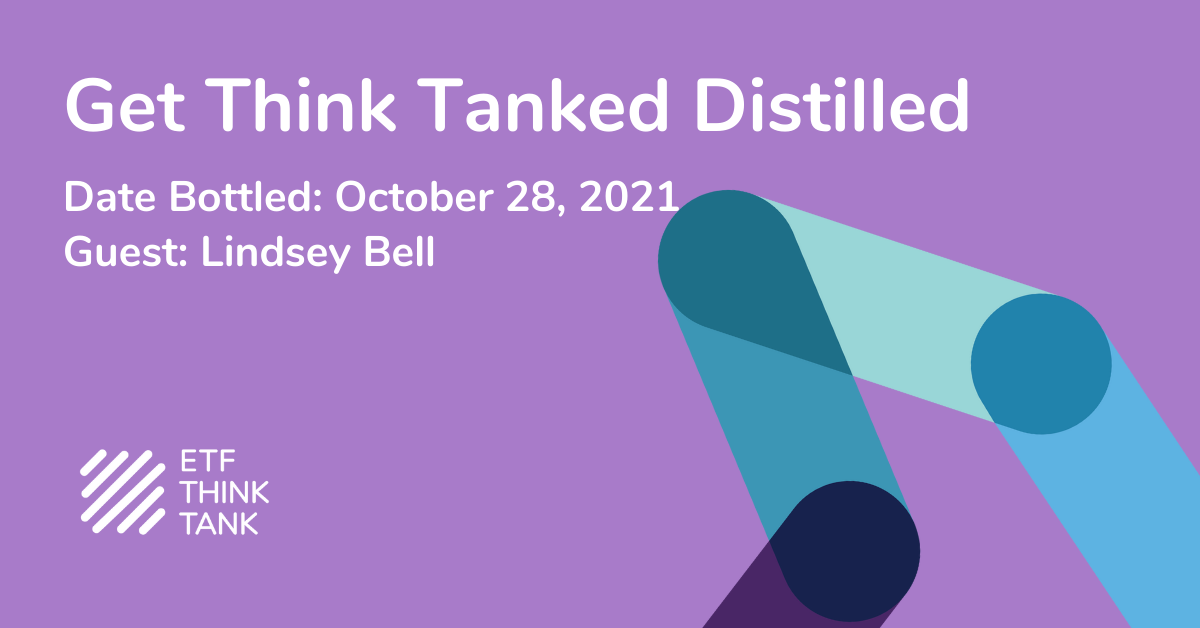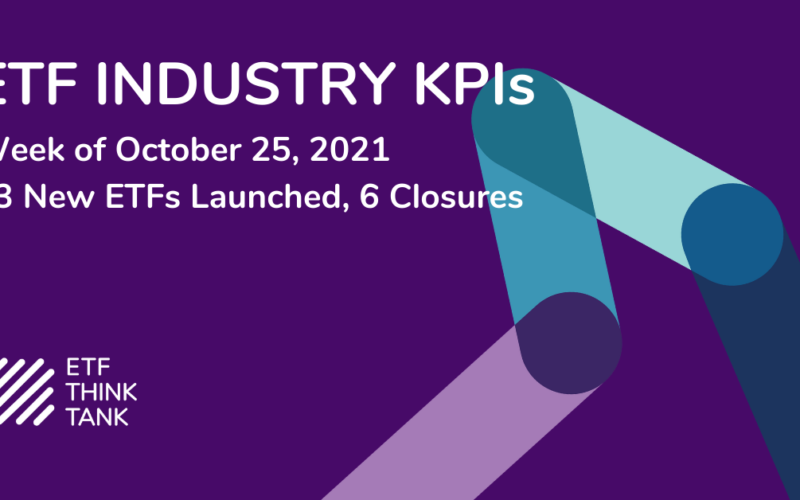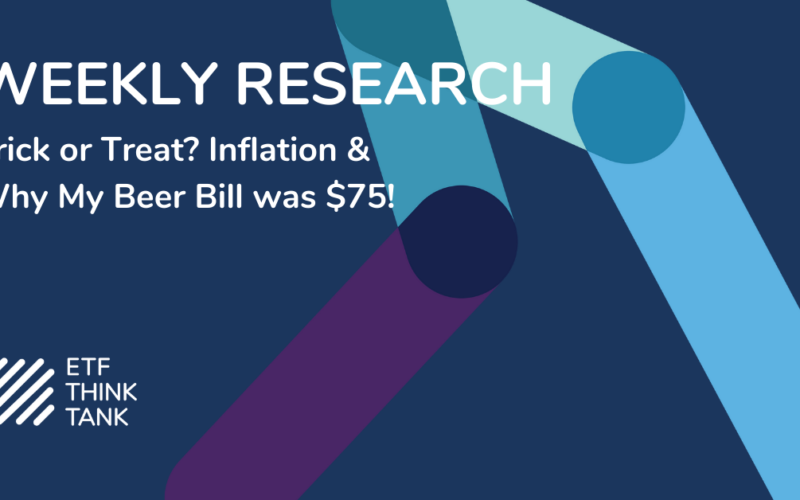There are a lot of variables to consider in the financial markets today – global supply chain impacts, central bank policy decisions, decelerating growth and a potential China real estate crisis just to name some. Lindsey Bell, the Chief Markets & Money Strategist at Ally Financial, looks to educate retail investors and get customers the proper content to help them navigate the market. She joined the ETF Think Tank to offer her thoughts from a macro view and discuss the current risks and opportunities present today.
At a high level, Bell notes that we may be at peak earnings right now, but that’s not uncommon coming out of a recession. We’re still looking at 8% earnings growth next, but she says that margins may be the key metric to watch going forward. Corporate America has gotten away with not giving workers noticeable pay increases over the past year, but that’s starting to change during the current labor shortage. There’s room for margin compression, but they could remain at average or above average levels, which would allow the markets to move higher.
A lot gets talked about regarding what’s causing the current supply chain issues, but Bell thinks it’s really a mismatch between supply and demand. There are delays in getting things into the end consumer’s hands, but demand has remained robust and that hasn’t helped. She notes that the Fed didn’t do anyone any favors by continuing to call inflation transitory because it gave the perception that the issue would soon go away on its own. These things will, however, work themselves out. Metrics, such as days at port and container costs, are very slowly beginning to come back down, but it won’t be solved quickly. It’s a good thing that the consumer is still flush with cash and can absorb higher costs for the time being, but it’s still too early to call how this will end.
The state of the fixed income market comes up often in this conversation, including how investors should be using bonds in their portfolio today. Bonds, she says, are clearly losing people money in real terms and it’s been hard for the retail investor to make a decent low risk return. This is part of the reason why so much money has and continues to flow into equities – the desire to achieve a higher return. Dividend-paying stocks, one would think, would be the logical landing spot for some of these investors, but they just haven’t been performing well at all. Most investors are still interested in the mega-cap growth trade.
Earlier this year, U.S. equities and Treasuries experienced a strong positive correlation for a few months. Bell doesn’t expect this to continue and sees the relationship already beginning to break down. In terms of current positioning, you really need to think about the investor’s time frame. If they’re younger, they need to be focusing primarily or even entirely on risk assets. The current state of the financial markets makes the financial advisor’s job more difficult, and it’s required some creativity to focus on long-term wealth creation instead of just what’s working at the moment.
What about fixed income alternatives, such as high yield bonds and preferreds? Bell believes that personal circumstances should dictate decisions, but young people should be thinking of fixed income today as more of a diversifier and a risk hedge. The reason to include fixed income in a portfolio today for this group is downside protection.
A few other thoughts…
- Bitcoin is an interesting asset class and could be at a “watershed moment”. The recently approved Bitcoin futures ETF could help the average investor, but it also creates problems. Most people don’t understand futures, how they work or how performance could be different from the underlying asset itself.
- Crypto education remains key, and Ally is working extensively to educate investors. Many customers are still participating in a lot of speculative trades, including crypto, Tesla, Apple, and the other FANG stocks. She’s trying to teach that there’s much more to the market than just this handful of securities.
- Retail investors care about ESG issues, but they don’t really get what it means in terms of investing. For the most part, ESG is confusing, and it can be packaged and explained better.
This week our guest will be Chris Sullivan, joining us to discuss the current state of the media and where people are getting their information from. Sign up here.
Disclosure
All investments involve risk, including possible loss of principal.
The information provided here is for financial professionals only and should not be considered an individualized recommendation or personalized investment advice. The investment strategies mentioned here may not be suitable for everyone. Each investor needs to review an investment strategy for his or her own particular situation before making any investment decision.
All expressions of opinion are subject to change without notice in reaction to shifting market conditions. Data contained herein from third party providers is obtained from what are considered reliable sources. However, its accuracy, completeness or reliability cannot be guaranteed.
Examples provided are for illustrative purposes only and not intended to be reflective of results you can expect to achieve.
The value of investments and the income from them can go down as well as up and investors may not get back the amounts originally invested, and can be affected by changes in interest rates, in exchange rates, general market conditions, political, social and economic developments and other variable factors. Investment involves risks including but not limited to, possible delays in payments and loss of income or capital. Neither Toroso nor any of its affiliates guarantees any rate of return or the return of capital invested. This commentary material is available for informational purposes only and nothing herein constitutes an offer to sell or a solicitation of an offer to buy any security and nothing herein should be construed as such. All investment strategies and investments involve risk of loss, including the possible loss of all amounts invested, and nothing herein should be construed as a guarantee of any specific outcome or profit. While we have gathered the information presented herein from sources that we believe to be reliable, we cannot guarantee the accuracy or completeness of the information presented and the information presented should not be relied upon as such. Any opinions expressed herein are our opinions and are current only as of the date of distribution, and are subject to change without notice. We disclaim any obligation to provide revised opinions in the event of changed circumstances.
The information in this material is confidential and proprietary and may not be used other than by the intended user. Neither Toroso or its affiliates or any of their officers or employees of Toroso accepts any liability whatsoever for any loss arising from any use of this material or its contents. This material may not be reproduced, distributed or published without prior written permission from Toroso. Distribution of this material may be restricted in certain jurisdictions. Any persons coming into possession of this material should seek advice for details of and observe such restrictions (if any).












